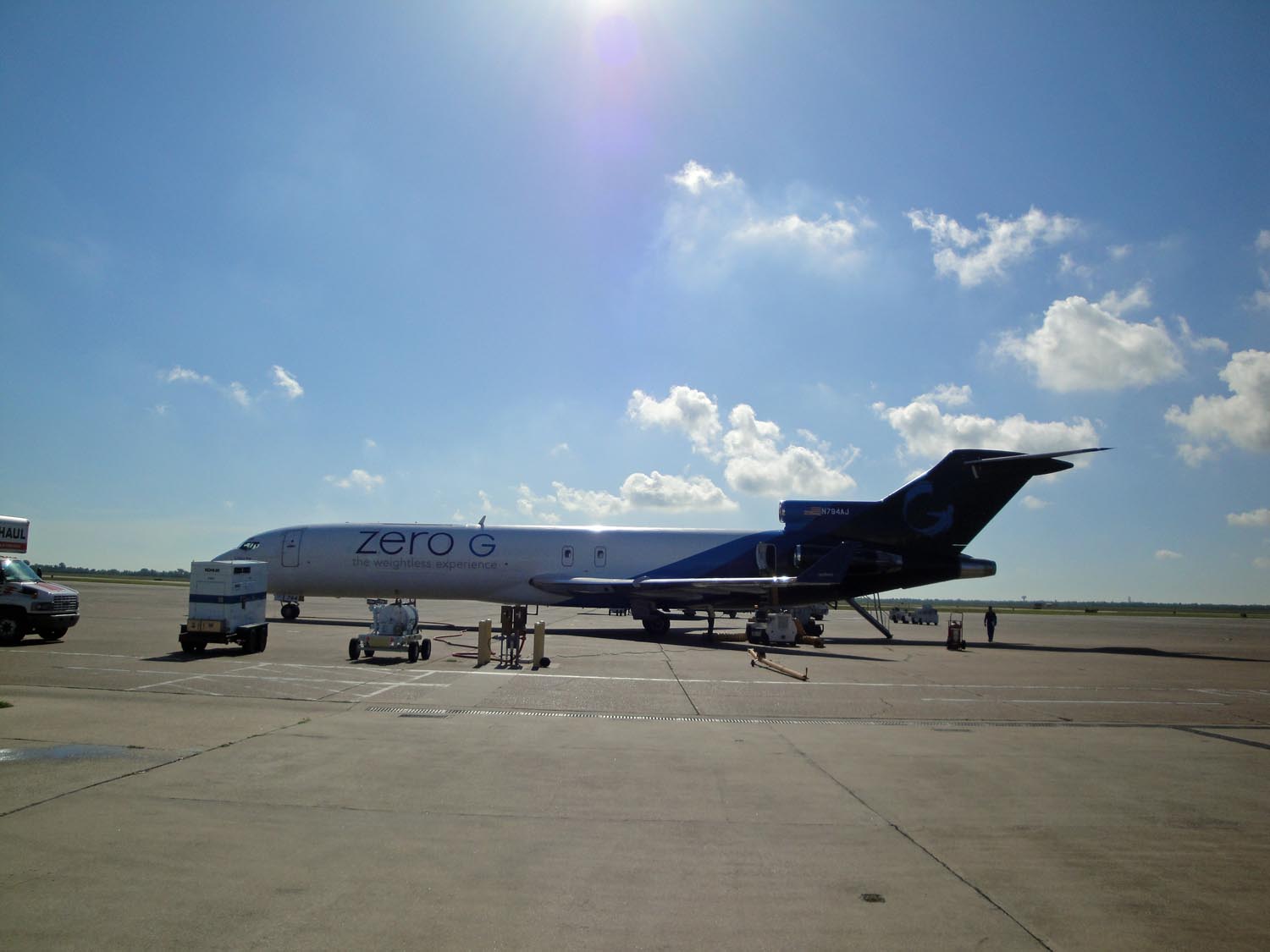
Student Team Hopes to Taste Zero Gravity Today

HOUSTON —Mother Nature, we need your help. After one day of delay due to bad weather, a college team of engineering students is hoping for better luck today (July 19) in order to fly on an acrobatic airplane ride and experiment with fire in zero gravity.
The eight-student team from the University of California, San Diego is one of seven university teams set to fly a variety of experiments on a Zero Gravity Corporation jet from Ellington Field here today as part of NASA's Microgravity University Program, which provides students with access to weightless conditions for their experiments. The UCSD Microgravity Team is led by aerospace engineering senior Sam Avery and SPACE.com has been following the group's work as its team journalist to provide a glimpse into how student science on weightless flights is performed.

Bad weather prevented the zero-gravity flight on Thursday afternoon. If the weather cooperates with NASA today, the agency will be able to squeeze in two microgravity flights to fly each university experiment twice, though with different team members. The ZERO-G flight is expected to last up to two hours and include about 32 parabolas on a Boeing 727 plane modified for the extremes of parabolic flight. The plane flies up and down to generate brief periods of weightlessness (about 30 seconds) before swinging back up to pull 2Gs (twice the force of Earth's gravity). [Photos: Zero-Gravity Science at NASA's Microgravity University]
Editor's note: You can follow the progress of today's NASA Microgravity University Program flight via the program's Twitter feed @NASA_RGEFPand by following the hashtag #DefyGravity. UCSD Microgravity Team member Nico Montoya has been posting updates about the team's work at @NicoSuave9.
Here are the college teams flying on today's flights:
The following is a list from NASA of the undergraduate teams set to ride on NASA's zero-gravity flights this week with the names of their experiments:
- Baldwin Wallace University / John Carroll University: The Stability of Liquid Bridges under Varying Total Body Force
- Purdue University: Water Removal in Proton Exchange Membrane Fuel Cells
- Rice University Electromagnetic Position Sensing in Microgravity
- SUNY Buffalo: Microgravity Characterization of Zirconia Monolithic Electrokinetic Micropumps
- University of California San Diego: Fiber Supported Droplet Combustion of Bioethanol and Biobutanol
- University of Texas, El Paso: Combustion of Lunar and Martian Regolith Simulants with Magnesium
- West Virginia University: Optimization of Liquid Spray Cooling in a Variable Gravity Environment.
Email Tariq Malik at tmalik@space.com or follow him @tariqjmalikand Google+. Follow us @Spacedotcom, Facebook and Google+.
Get the Space.com Newsletter
Breaking space news, the latest updates on rocket launches, skywatching events and more!
Join our Space Forums to keep talking space on the latest missions, night sky and more! And if you have a news tip, correction or comment, let us know at: community@space.com.

Tariq is the Editor-in-Chief of Space.com and joined the team in 2001, first as an intern and staff writer, and later as an editor. He covers human spaceflight, exploration and space science, as well as skywatching and entertainment. He became Space.com's Managing Editor in 2009 and Editor-in-Chief in 2019. Before joining Space.com, Tariq was a staff reporter for The Los Angeles Times covering education and city beats in La Habra, Fullerton and Huntington Beach. In October 2022, Tariq received the Harry Kolcum Award for excellence in space reporting from the National Space Club Florida Committee. He is also an Eagle Scout (yes, he has the Space Exploration merit badge) and went to Space Camp four times as a kid and a fifth time as an adult. He has journalism degrees from the University of Southern California and New York University. You can find Tariq at Space.com and as the co-host to the This Week In Space podcast with space historian Rod Pyle on the TWiT network. To see his latest project, you can follow Tariq on Twitter @tariqjmalik.









